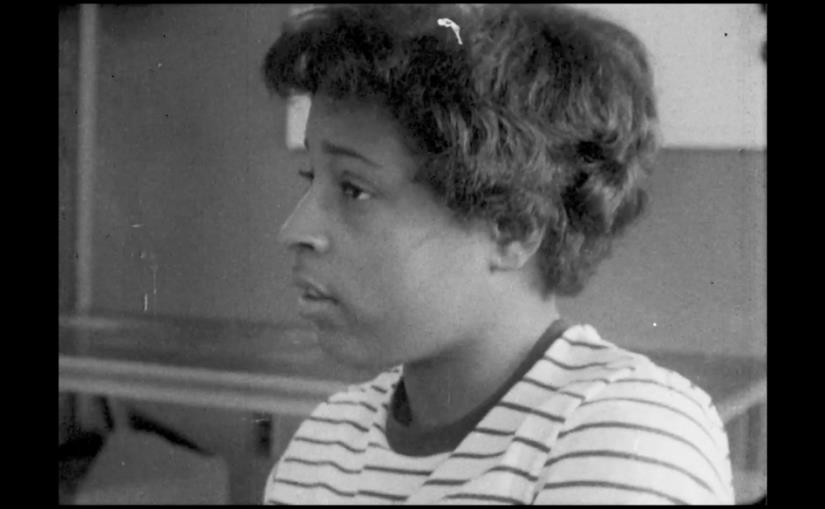Shaping a movement: Deborah Gray White discusses activism during Harpur’s early days

Deborah Gray White eagerly hopped on the bus at 42nd Street, toting her trunk. Her destination, sight unseen: Harpur College.
In 1967, college represented an opportunity to escape the New York City public housing project where she grew up and pursue true independence. But it was also an opportunity to shape the future in other ways.
Now a Rutgers University distinguished professor of history, White ’71 became the first president of the Afro-Latin Alliance, the precursor to today’s Black Student Alliance and one of the formative organizations that led to the establishment of Harpur College’s Africana Studies Department.
On Oct. 15, she discussed her experience at Harpur, her activism and her scholarly interest in African-American and women’s history during a Zoom talk hosted by Africana Studies. White returned to campus for Commencement in 2014, when she received an Honorary Doctor of Humane Letters.
“I really had a profound sense that things were really going to be different for me than that it had been from my parents. Both of them were Southerners and they had taken part in the Great Migration,” she said. “I got to experience the Civil Rights movement, to choose a career, to go to college; that wasn’t something my parents could have done.”
Harpur in the ’60s
The late ‘60s were a tumultuous time in American history, marked by frequent protests against both racism and the Vietnam War. The Binghamton campus was no exception.
“You couldn’t miss the fact that something was going on in the nation, because there were just so many demonstrations on campus and demonstrations to the point where the school would close down,” White remembered.
But only 18 years old and away from home for the first time, she had other priorities, common to most college students: enjoying her new freedom and securing her future. Except for that first summer, she stayed in Binghamton during her breaks and immersed herself in what she thought of as “Camp Harpur.”
As a woman of color, she knew she was being surveilled during trips to the supermarket and other local stores. The campus bus system wasn’t robust in those days, so she saved up and bought a used car, which proved helpful when she moved off campus to nearby Johnson City.
“You could go for days on end without seeing a Black person, particularly being as cold as it was,” she said.
With so few people of color on campus, the Black and Latinx students teamed up for the Afro-Latin Alliance. There were tensions in those early days, but many of them centered around dating pressures in an era when an unexpected pregnancy could irrevocably ruin a young woman’s future. The Black Power movement also tended to promote an environment that stressed traditional gender roles, with men as leaders, she recalled.
That dynamic led to some raised eyebrows when White became the organization’s first president.
“There were a lot of folks, both male and female, who thought that we really needed masculine representation. How are we going to have a woman as the head of this organization?” she said.
The club organized, demonstrated and pressured the University to undertake initiatives that promoted both student and academic diversity. More students of color enrolled and the Afro-Latin Alliance split into separate organizations for Black and Latinx students; the former became the Black Student Union, which exists today.
The students’ advocacy work had long-lasting implications: It led to the creation of courses that incorporated African-American viewpoints and ultimately the establishment of what is today the Africana Studies Department, among the first in the country in 1969.
Activism in academia
The tide of protest has risen yet again, spurred by tensions following the 2016 presidential election of Donald Trump and incidents such as the death of George Floyd at the hands of the Minneapolis police. White observes these movements both with a historian’s professional interest and a profound sadness that so much still remains to be done in the struggle for equity.
An “intellectual activist,” she holds an expansive view of activism that isn’t limited to street protests. Her own activism took shape in academia, where she helped shape the field of African-American women’s history.
That dedication came at a cost, especially early on; she risked her academic career with her first book, Ar’n’t I a Woman? Female Slaves in the Plantation South, published in 1985. Colleagues were dismissive of her research topic at the time; she feared she wouldn’t get tenure, and began making plans for a life outside academia. She landed a publishing contract just in time, she recounted.
White has also researched activism, and in 2017 published a book on mass marches in the 1990s called Lost in the USA: American Identity from the Promise Keepers to the Million Mom March. She didn’t attend these marches herself, but instead conducted extensive interviews and archival research, she said.
“I don’t think that everybody needs to be out in the streets. That’s worthy and it’s something that people really need to do, but there are others of us who find the pen or the classroom,” she reflected. “Each one of us has to figure out how they will participate in the movement. I have never given that movement up.”
